
Central Asia is a subregion of Asia that stretches from the Caspian Sea in the southwest and Eastern Europe in the northwest to Western China and Mongolia in the east, and from Afghanistan and Iran in the south to Russia in the north. It includes Kazakhstan, Kyrgyzstan, Tajikistan, Turkmenistan, and Uzbekistan. The countries as a group are also colloquially referred to as the "-stans" as all have names ending with the Persian suffix "-stan" in both respective native languages and most other languages.

Uzbekistan is a landlocked country in Central Asia. It is itself surrounded by five landlocked countries: Kazakhstan to the north; Kyrgyzstan to the northeast; Tajikistan to the southeast; Afghanistan to the south, Turkmenistan to the south-west. Its capital and largest city is Tashkent. Uzbekistan is part of the Turkic languages world, as well as a member of the Organization of Turkic States. While the Uzbek language is the majority spoken language in Uzbekistan, Russian is widely used as an inter-ethnic tongue and in government. Islam is the majority religion in Uzbekistan, most Uzbeks being non-denominational Muslims. In ancient times it largely overlapped with the region known as Sogdia, and also with Bactria.
The Uzbeks are a Turkic ethnic group native to the wider Central Asian region, being among the largest Turkic ethnic group in the area. They comprise the majority population of Uzbekistan, next to Kazakh and Karakalpak minorities, and are also minority groups in Afghanistan, Tajikistan, Kyrgyzstan, Kazakhstan, Turkmenistan, Russia, and China. Uzbek diaspora communities also exist in Turkey, Saudi Arabia, United States, Ukraine, and other countries.

Tajiks are a Persian-speaking Iranian ethnic group native to Central Asia, living primarily in Afghanistan, Tajikistan, and Uzbekistan. Tajiks are the largest ethnicity in Tajikistan, and the second-largest in Afghanistan and Uzbekistan. They speak varieties of Persian, a Western Iranian language. In Tajikistan, since the 1939 Soviet census, its small Pamiri and Yaghnobi ethnic groups are included as Tajiks. In China, the term is used to refer to its Pamiri ethnic groups, the Tajiks of Xinjiang, who speak the Eastern Iranian Pamiri languages. In Afghanistan, the Pamiris are counted as a separate ethnic group.

The Hindu Kush is an 800-kilometre-long (500 mi) mountain range on the Iranian Plateau in Central and South Asia to the west of the Himalayas. It stretches from central and eastern Afghanistan into northwestern Pakistan and far southeastern Tajikistan. The range forms the western section of the Hindu Kush Himalayan Region (HKH); to the north, near its northeastern end, the Hindu Kush buttresses the Pamir Mountains near the point where the borders of China, Pakistan and Afghanistan meet, after which it runs southwest through Pakistan and into Afghanistan near their border.

This is a timeline of Afghan history, comprising important legal and territorial changes and political events in Afghanistan and its predecessor states. To read about the background to these events, see History of Afghanistan. See also the list of heads of state of Afghanistan and the list of years in Afghanistan.

Balkh is a town in the Balkh Province of Afghanistan, about 20 km (12 mi) northwest of the provincial capital, Mazar-e Sharif, and some 74 km (46 mi) south of the Amu Darya river and the Uzbekistan border. Its population was estimated to be 138,594 in 2021–22 by the Afghan National Statistic and Information Authority. Listed as the current 8th most populous city in the country, 2024 estimates set the population of Balkh at 114,883.
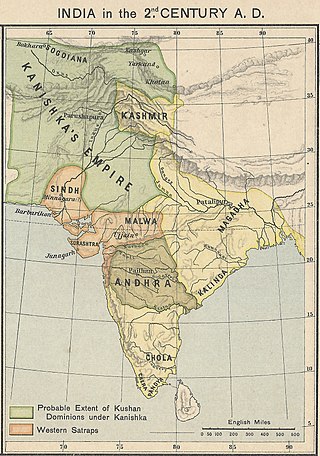
The Kushan Empire was a syncretic empire formed by the Yuezhi in the Bactrian territories in the early 1st century. It spread to encompass much of what is now Tajikistan, Uzbekistan, Afghanistan, Pakistan, Eastern Iran and Northern India, at least as far as Saketa and Sarnath, near Varanasi, where inscriptions have been found dating to the era of the Kushan emperor Kanishka the Great.
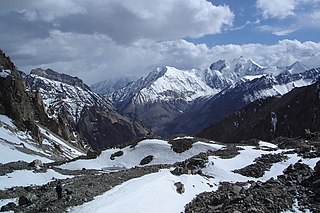
The Pamir Mountains are a range of mountains between Central Asia and South Asia. They are located at a junction with other notable mountains, namely the Tian Shan, Karakoram, Kunlun, Hindu Kush and the Himalaya mountain ranges. They are among the world's highest mountains.

Greater Khorāsān or Khorāsān or Khurāsān is a historical eastern region in the Iranian Plateau between West and Central Asia that encompasses western and northern Afghanistan, northeastern Iran, the eastern halves of Turkmenistan and Uzbekistan, western Tajikistan, and portions of Kyrgyzstan and Kazakhstan.

Central Asia has long been a geostrategic location because of its proximity to the interests of several great powers and regional powers.

The history of Central Asia concerns the history of the various peoples that have inhabited Central Asia. The lifestyle of such people has been determined primarily by the area's climate and geography. The aridity of the region makes agriculture difficult and distance from the sea cut it off from much trade. Thus, few major cities developed in the region. Nomadic horse peoples of the steppe dominated the area for millennia.

Greater India, also known as the Indian cultural sphere, or the Indic world, is an English language socio-cultural concept composed of many countries and regions in South Asia, East Asia and Southeast Asia that were historically influenced by Indian religions and Indian culture which itself formed from the various distinct indigenous cultures of these regions.

The Samanid Mausoleum is a mausoleum located in the northwestern part of Bukhara, Uzbekistan, just outside its historic center. It was built in the 10th century CE as the resting place of the powerful and influential Islamic Samanid dynasty that ruled the Samanid Empire from approximately 900 to 1000. It contained three burials, one of whom is known to have been that of Nasr II.
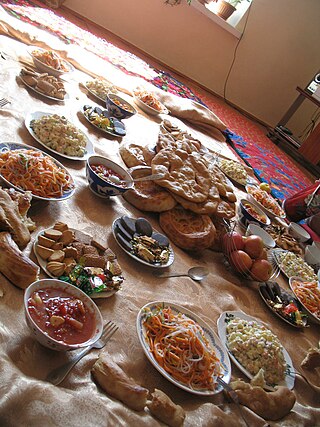
Central Asian cuisine has been influenced by Persian, Indian, Arab, Turkish, Chinese, Mongol, African and Russian cultures, as well as the culinary traditions of other varied nomadic and sedentary civilizations. Contributing to the culinary diversity were the migrations of Uyghur, Slav, Korean, Tatar, Dungan and German people to the region.
Stephen Frederick Starr is an American expert on Russian and Eurasian affairs, a musician, and a former president of Oberlin College.

Diplomatic relations between Afghanistan and China were established in the 18th century, when Afghanistan was ruled by Ahmad Shah Durrani and China by Qianlong. But trade relations between these nations date back to at least the Han dynasty with the profitable Silk Road. Presently, China has an embassy in Kabul and Afghanistan has one in Beijing. The two countries share a 92 km (57 mi) border.

The Sultan Mahmud Dam or Band-e Sultan is a dam located on the Ghazni River in the Jaghatu District of Ghazni Province in Afghanistan. As of April 2013, the dam is just used for irrigating 15,000 hectares of land. It is believed to have the potential to meet electricity needs of 50,000 families. The dam has importance for residents of Ghazni and neighboring Maidan Wardak province. It is believed to be first built during the Ghaznavids era in the 10th century, in memory of Sultan Mahmud of Ghazni.
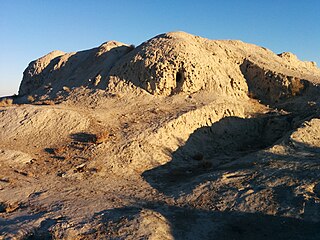
Varakhsha, also Varasha or Varahsha, was an ancient city in the Bukhara oasis in Sogdia, founded in the 1st century BCE. It is located 39 kilometers to the northwest of Bukhara. Varakhsha was the capital of the Sogdian dynasty of the kings of Bukhara, the Bukhar Khudahs. It ultimately never recovered from the Muslim conquest of Transoxiana.
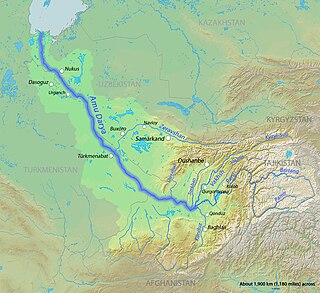
The Gurgānj Dam was a major water engineering project of medieval-era Central Asia. The dam was constructed on the Amu Darya river, near what is now called Konye-Urgench in northern Turkmenistan.



















